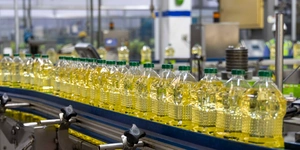India’s beach sands have 11% of the world’s Ilmenite (a titanium-iron oxide mineral) deposits but the country imports a billion dollars worth of titanium di-oxide every year due to insufficient mining and processing of beach sand, Vivek Bharadwaj, Secretary of the Ministry of Mines said.
Ilmenite is the primary ore of titanium, metal that is used to make high performance alloys. Indian Bureau of Mines states that about 90% of the world's titanium mineral production is used in the manufacturing of white titanium di-oxide pigment. It is used in the manufacture of all types of white and pastle shades of paints, white-walled tyres, glazed papers, plastics, printed fabrics, pharmaceuticals, soaps, and face powders and other cosmetic products, etc. Titanium di-oxide is also used in the manufacture of many sunscreen lotions and creams because of its non-toxicity and ultra violet absorption properties. Its non-reactive property makes titanium metal one of the few materials that can be used in the human body for orthopaedic use and in pacemakers.
Speaking at the launch of the Federation of Indian Chambers of Commerce and Industry (FICCI) Report on "New Age Energy Minerals" in Delhi, Bharadwaj said the only way to increase domestic availability of titanium di-oxide is to open up the sector to private players, and encourage more domestic explorations. “We need to take decisive steps,” he said, adding that there is a proposal to consider transferring the mandate of beach sand mining from the Department of Atomic Energy (DEA) to the Department of Mining.
Bharadwaj also touched upon the challenges faced by the offshore mining industry and noted that the government is taking decisive steps to amend the Offshore Areas Mineral (Development and Regulation) Act, 2002.
"The government is in the process of amending the Offshore Areas Act that was put in the public domain for consultations. The consultations are now over,” said Bharadwaj.
A FICCI report on new age energy minerals, launched at the event, pointed out that India’s current mineral exploration status is less than 10% of its obvious geological potential while new age minerals related exploration has not taken off. The report categorises rare earth elements (REE) as well as battery minerals such as lithium, cobalt, nickel and graphite as new age energy minerals. The REE represents a group of 17 elements found in varying combinations in the earth’s crust. With one of the highest concentrations of rare earth mineral reserves and massive processing capabilities, China controls the global REE value chain at the moment.
The report called for increased focus on exploration and wanted it to be not limited to land and deposits along the coast but also sea-bed mining. Financial assistance and incentivisation for units focusing on exploration and production of new age energy minerals was another recommendation.
The provides a detailed overview of geographical and geological data, value chains, end-use sectors, applications, market outlook, and long-term demand for each mineral, along with challenges, opportunities, and key recommendations.









Leave a Comment
Your email address will not be published. Required field are marked*